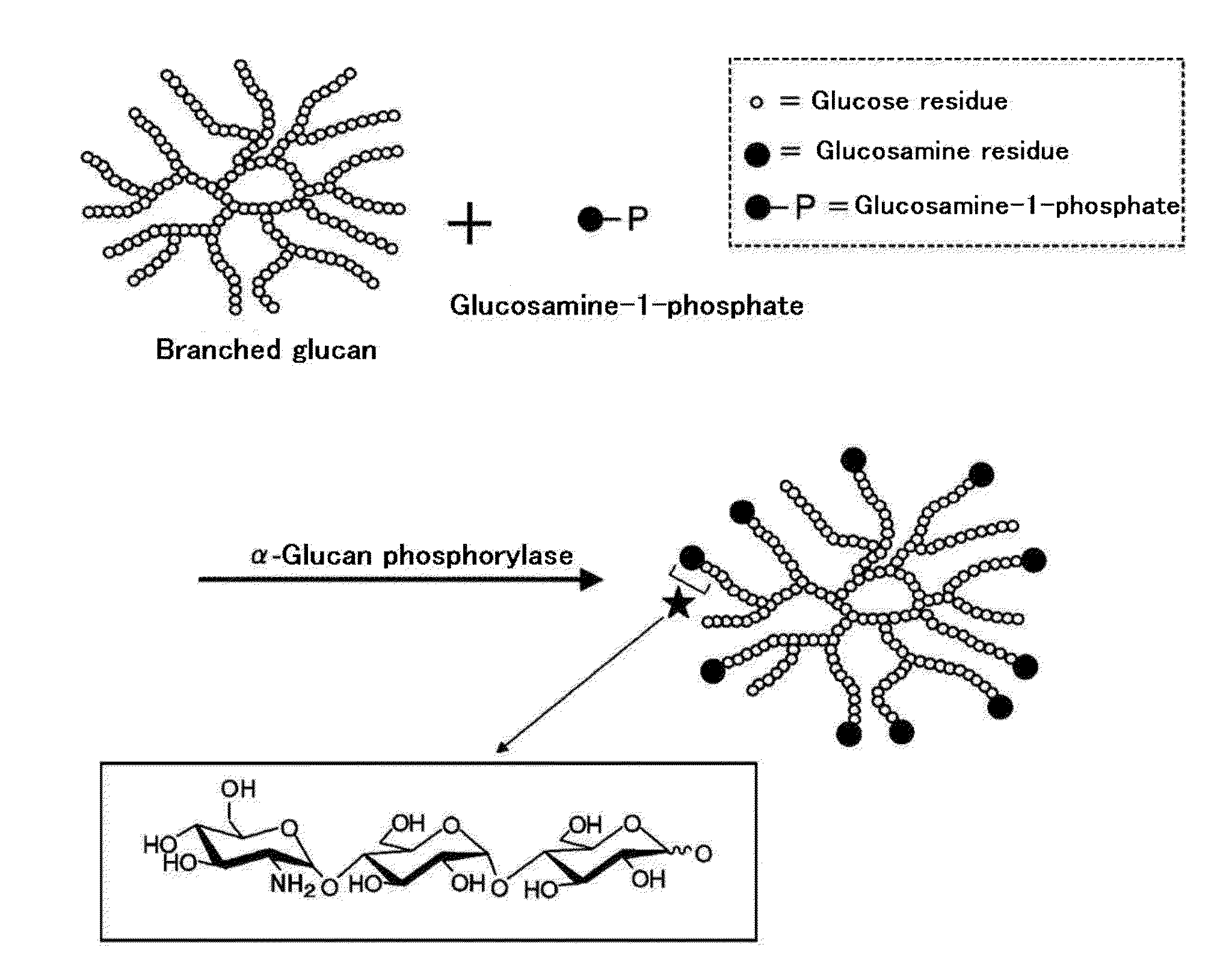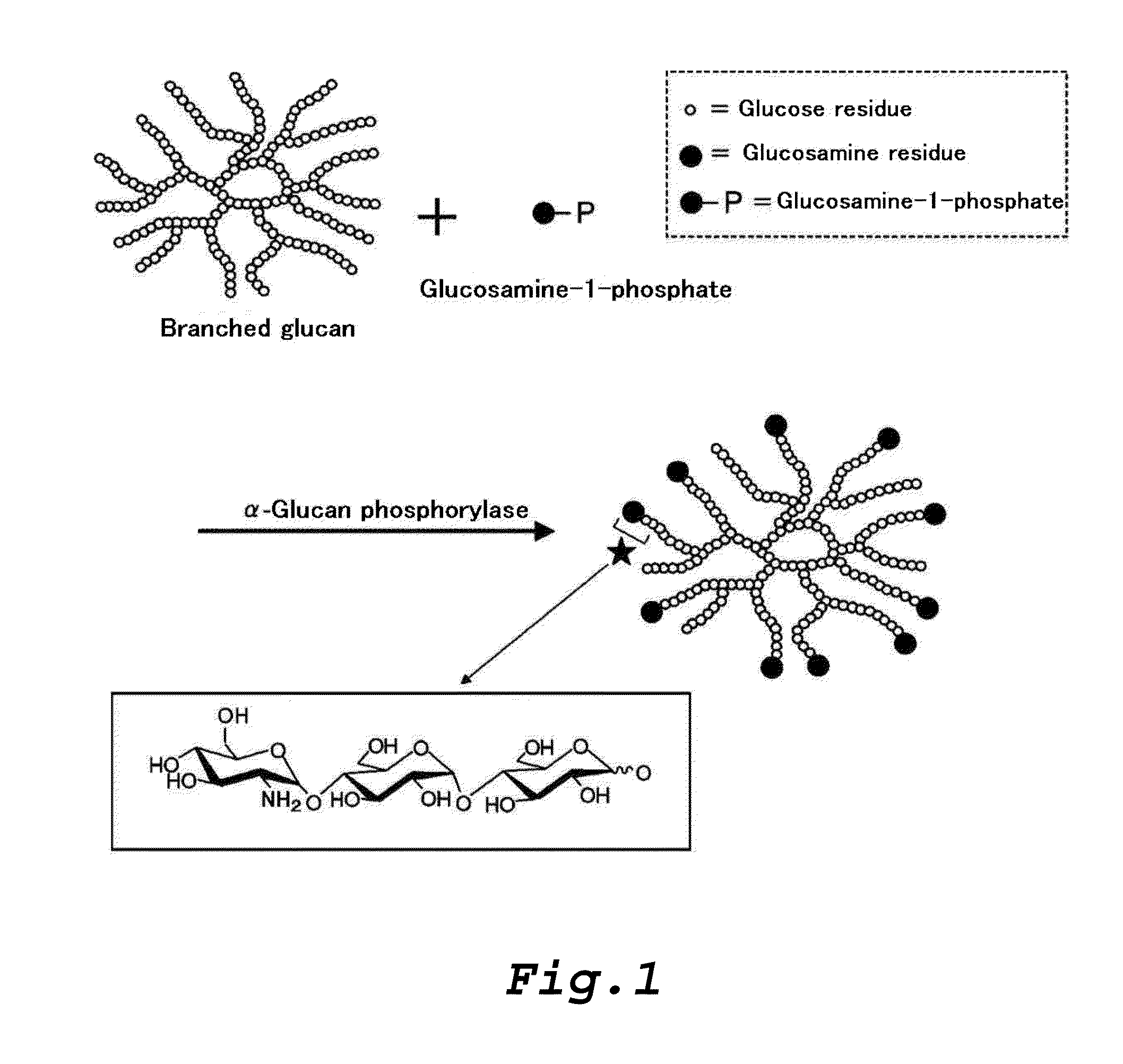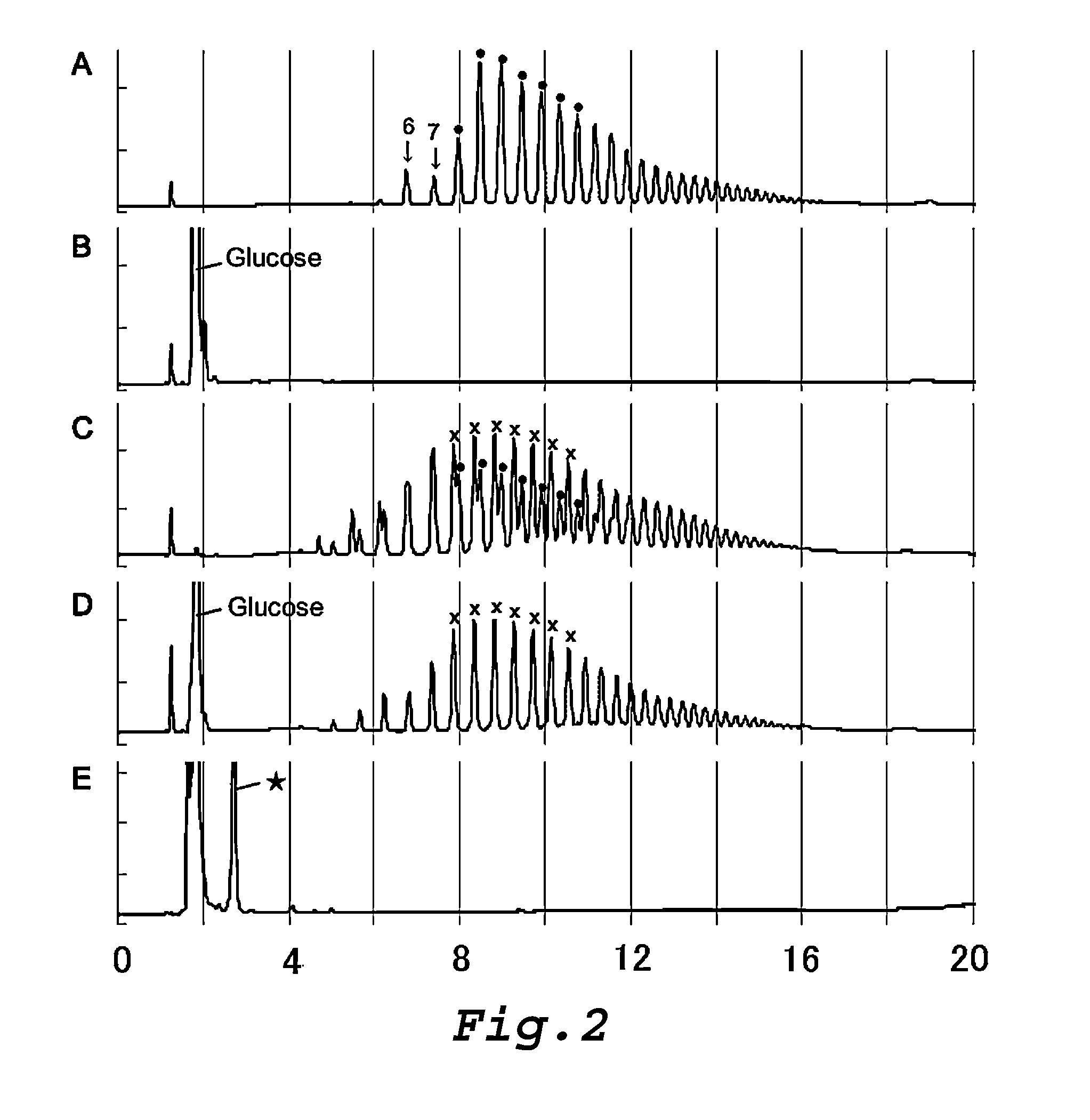Amino sugar-containing glucan, method for producing same, and use thereof
a technology of amino sugar and glucan, which is applied in the preparation of sugar derivatives, drug compositions, tissue cultures, etc., can solve the problems of risk of macromolecule accumulation in a particular organ, and short half-life in blood, so as to maintain the medically effective ingredient stably, improve quality stability, and improve the effect of quality stability
- Summary
- Abstract
- Description
- Claims
- Application Information
AI Technical Summary
Benefits of technology
Problems solved by technology
Method used
Image
Examples
production example 1
Preparation of Aquifex aeolicus VF5-Derived α-Glucan Phosphorylase
[0328]Aquifex aeolicus VF5-derived α-glucan phosphorylase was recombination-produced by the following method.
(A) Making of Aquifex aeolicus VF5-Derived α-Glucan Phosphorylase Gene
[0329]A nucleic acid (also referred to as an “α-glucan phosphorylase gene”) having a base sequence (base sequence of 491380th to 493458th of ACCESSION No. AE000657 of GenBank base sequence database) encoding the amino acid sequence for Aquifex aeolicus VF5-derived α-glucan phosphorylase gene (the amino acid sequence described in SEQ ID NO:2 of Sequence Listing; the amino acid sequence obtained by translating the base sequence of 491380th to 493458th of ACCESSION No. AE000657 of GenBank base sequence database of National Center for Biotechnology Information (NCBI) in the USA) was chemically synthesized by a method well-known to those skilled in the art. An NdeI site was created upstream of a translation initiation codon of this α-glucan phosph...
production example 2
Production of Branched Glucan (B)
[0333]50 g of a waxy corn starch (manufactured by SANWA CORNSTARCH CO., LTD) was suspended into 1,000 ml of 10 mM sodium phosphate buffer (pH 7.0), and the suspension was heated to about 100° C. to gelatinize the waxy corn starch. 200,000 units of a highly thermostable branching enzyme prepared according to the method described in Example 1 of Japanese Laid-Open Publication No. 2000-316581 was added to the starch paste which had been cooled to about 70° C. to prepare a reaction solution, and then which was allowed to react at 70° C. for 16 hours. After the reaction solution was heated at 100° C. for 20 minutes, the supernatant after centrifugation at 6,500 rpm for 10 minutes was filtered with a membrane having a pore diameter of 0.8 μm. Then, the filtrate was desalted using a gel filtration chromatography (AKTA purifier) system (column: HiPrep™ 26 / 10 Desalting manufactured by GE Healthcare) to remove low-molecular weight polysaccharides. 1,000 ml of ...
production example 3
Production of Branched Glucan (P)
[0335]An aqueous sucrose solution was prepared by dissolving 150 g of sucrose in 1,000 ml of distilled water, and filtering the solution with a membrane having a pore diameter of 0.2 μm. The aqueous sucrose solution (800 ml), 20 ml of a 5% aqueous branched glucan (B) solution (prepared by filtering a 5% aqueous solution of the branched glucan (B) produced by the aforementioned Production Example 2 of branched glucan, with a membrane having a pore diameter of 0.2 μm), 4 ml of a 1 M sodium phosphate buffer (pH 7.0), 1,800 U of recombinant Streptococcus mutans sucrose phosphorylase prepared by the method as described in Example 2.5 of International Publication WO 02 / 097107 pamphlet, 1,200 U of α-glucan phosphorylase produced in Production Example 1 of the present application, and 600,000 U of the highly thermostable branching enzyme prepared according to the method described in Example 1 of Japanese Laid-Open Publication No. 2000-316581 used in Producti...
PUM
| Property | Measurement | Unit |
|---|---|---|
| Fraction | aaaaa | aaaaa |
| Molar density | aaaaa | aaaaa |
| Molar density | aaaaa | aaaaa |
Abstract
Description
Claims
Application Information
 Login to View More
Login to View More - R&D
- Intellectual Property
- Life Sciences
- Materials
- Tech Scout
- Unparalleled Data Quality
- Higher Quality Content
- 60% Fewer Hallucinations
Browse by: Latest US Patents, China's latest patents, Technical Efficacy Thesaurus, Application Domain, Technology Topic, Popular Technical Reports.
© 2025 PatSnap. All rights reserved.Legal|Privacy policy|Modern Slavery Act Transparency Statement|Sitemap|About US| Contact US: help@patsnap.com



